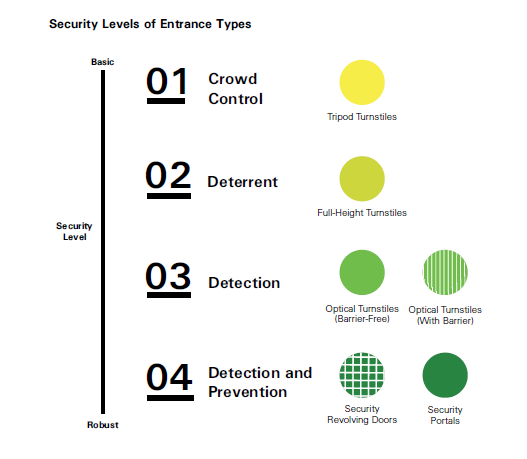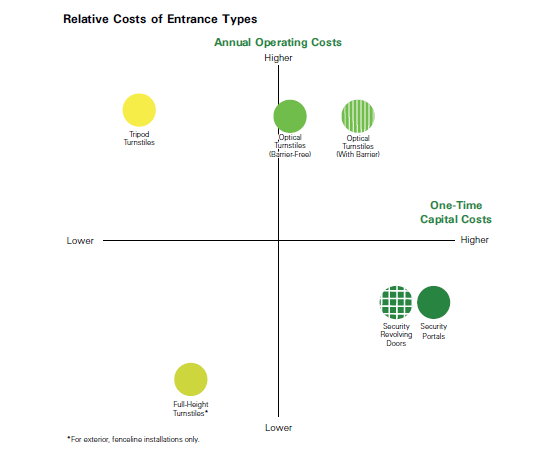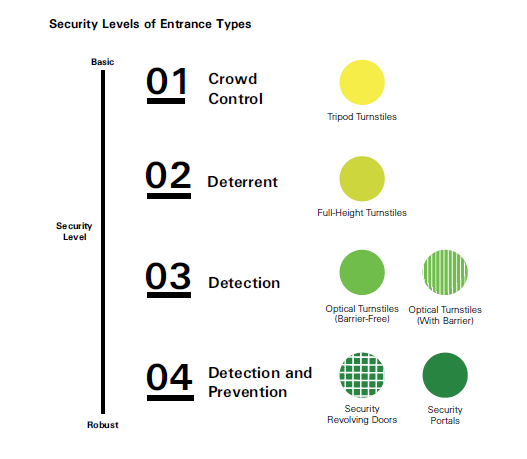 No organization has unlimited budgets for security. Because of that, you have to make some difficult choices when you are planning your overall security program. You need to determine what your objectives are, and then prioritize them so you know how to best allocate your budget.
No organization has unlimited budgets for security. Because of that, you have to make some difficult choices when you are planning your overall security program. You need to determine what your objectives are, and then prioritize them so you know how to best allocate your budget.
But before you can accurately set security objectives, you need to understand your own risk profile. By learning where you are the most vulnerable, you can place your security resources where they are most needed.
With objectives and priorities in place, the next step will be to consider specific products to fit those needs. This is where the budget conversation becomes a concrete reality. It’s not enough to look at the price tag on what you’re considering. Beyond the initial capital investment, there are operating costs along with resources such as additional personnel you may need. There are also intangible costs and other factors that have an impact on the bottom line. Only when you understand the full value of each product or solution you are considering, will you have a complete picture of what it will cost your organization.
When it comes to selecting the right security entrances to control access, that choice should be based on the specific needs of that location and the function of the entry, including the required level of security and the architectural goals of the installation. There’s a wide range of security entrances available with differing levels of control and appearances to match those identified project needs.
Four Levels of Security that Impact the Bottom Line
Security entrances protect a facility at four different security levels. The four levels are: crowd control, deter, detect, and finally, detect and prevent.
1. Establishing Crowd Control
Waist-high tripod turnstiles allow only one person to enter at a time, helping to maintain a steady flow of people through an entrance. They are typically used in locations that require ongoing supervision, as it is possible for someone to crawl under or jump over this type of turnstile to enter without being detected or stopped.
2. Deterring Casual Intrusion
Because it cannot be jumped over, a full-height turnstile works at a perimeter (such as a fence line) to deter intrusion attempts. They prevent tailgating by rotating just enough to let one person through at a time. However, it is possible for two relatively small individuals to share a compartment and enter on a single credential. Like waist-high tripod turnstiles, they have no sensors which could detect this activity. Therefore, full-height turnstiles are typically used as a first layer of defense, along with video cameras to record activity. There may also be a security guard placed at the entrance if tailgating is a concern.
3. Detecting Tailgating
Optical turnstiles are typically used in a lobby area where employees and registered visitors enter. These include sensors to detect and alarm if more than one individual moves through on a single authorization. Because optical turnstiles can still be jumped over, it is recommended that the entrance be supervised. This has a great impact on the ongoing operating cost of this solution.
4. Detecting and Preventing Tailgating
Security revolving doors and mantrap portals can both detect and prevent tailgating and piggybacking. Because they are so good at identifying an intruder and rebuffing them, these types of sophisticated doors do not require any supervision, creating a quicker return on investment.
 Here is a breakdown of the four levels of security delivered by entrance types:
Here is a breakdown of the four levels of security delivered by entrance types:

Cost Differences Between Security Entrances
When making your budget decisions, you should consider all the costs associated with each type of entrance. Beyond the purchase, installation, and user training, operating costs include maintenance, repairs, and electricity. The first three security levels also require security personnel in order to prevent tailgating or other unauthorized intrusions.
This chart shows how the different types of entrances compare for capital expenditures vs. ongoing expenses. It’s clear that per unit, tripod turnstiles and full height turnstiles have lower up-front costs than optical turnstiles, security revolving doors and mantrap portals.

Upfront Costs Can Be Deceiving
Sometimes it can often be more cost-effective to install an entrance that does not require the ongoing presence of a guard to prevent unauthorized entry or tailgating. For example, if you have a data center where it is critical to limit entry to only those with the highest authorities, it makes sense to choose a security revolving door or mantrap portal for that location. While these products may have a higher initial price than a turnstile, at the end of the year your total costs for that entry will be lower than if you had to hire an officer to staff that entrance full-time.
It is also important to be aware that while security guards do increase the level of deterrence and security at an entrance, they are by no means infallible. “Social engineering” is the term used to describe the variety of clever ruses used by criminals to get past even the most diligent guard. These scams are astounding in their variety and inventiveness, and demonstrate that there is virtually no guarded entry that cannot be breached by a determined (and skillful) criminal.
When you are considering security entrances, or access control in general, it pays to look at the full picture of what your costs will be. Working with a responsible and knowledgeable integrator or manufacturer will help you take a deep dive into these details and many more to make the best choice for your organization.



